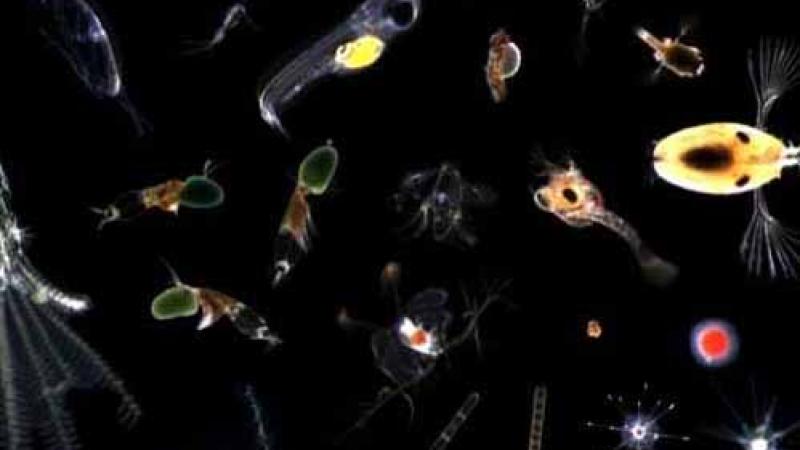February 18, 2015

An aquatic ecologist wants to track the distribution of plankton species in Lake George. A computer scientist is developing pattern recognition software that identifies animals in ordinary photographs. Now, with the support of a new seed program for targeted multidisciplinary research projects at Rensselaer Polytechnic Institute, those scientists are teaming up with digital artists to develop three-dimensional models of plankton distribution based on information captured by a towed submersible sensor.
The new Knowledge and Innovation Program (KIP) of the Rensselaer Office of Research has awarded four grants to spur multidisciplinary research in the areas of the built environment, environmental resilience, advanced cyber-infrastructure, and bio-innovation. In addition to acting as an idea incubator – helping researchers move from concept to funded research – KIP is structured to serve as a catalyst for collaboration across Rensselaer’s five schools, said Jonathan Dordick, vice president for research at Rensselaer. Proposed projects pair science, engineering, and architecture with business and the humanities. The collaborations are also intended to impact STEAM (Science, Technology, Engineering, Arts, and Math) education.
“KIP is directed toward integrating teams of researchers with the goal of addressing critical problems facing society,” said Dordick. “Through innovative research projects, Rensselaer faculty and students at all levels are working at the interface of science, technology, and the humanities and social sciences to advance solutions to challenges in healthcare, the natural and built environment, and predictive data analytics. Results from the KIP research will position Rensselaer researchers to receive support from federal agencies, industry, and private foundations that will enable truly creative problem solving.”
Initial KIP projects include:
- A three-dimensional model of plankton distribution
- A computational tool that integrates data about a microbiome with that of its ambient environment
- A semantic digital platform to integrate research at the national level in the sciences and humanities
- Predictive modeling tools to evaluate environmentally friendly “dynamic” building designs
Each project is supported with up to $100,000 in funding, as well as necessary financial, administrative, and mentoring support from the Office of Research. The level of funding is far above typical seed grants at most universities, which will result in broader teams and faster impact.
The researchers in the plankton distribution project join together a broad array of knowledge and capabilities. For example, Chuck Stewart, head of the Department of Computer Science at Rensselaer, is developing the Image Based Ecological Information System with partners in academia and wildlife conservation. Aquatic ecologist Rick Relyea, in the Department of Biological Sciences, is director of the Jefferson Project at Lake George, a partnership between Rensselaer, IBM, and the FUND for Lake George that combines smart technology and scientific experimentation to create environmental monitoring tools of unprecedented sophistication. And Kathleen Ruiz, an associate professor in the Department of Arts, developed FLO: The Watershed Project, an educational video game that guides users through a simulated watershed. Project partners also include Sandra Nierzwicki-Bauer, director of the Rensselaer Darrin Fresh Water Institute field station on Lake George, and Kathy High, professor in the Department of Arts.
The towable sensor, software, and visualization tools will provide the Jefferson Project with previously unavailable information at the interface between the physical and biological processes within the lake. Although the Jefferson Project employs sophisticated sensor systems to detect physical and chemical changes over space and time, information on the distribution of plankton currently relies on labor-intensive manual water sampling and identification of plankton under a microscope. The new technology will be capable of capturing and analyzing up to 100,000 images per day.
In another project, a team of microbiologists, biological engineers, data scientists, social scientists, and architects will focus on characterizing and predicting the responses of natural and engineered microbial communities to changing environmental conditions. Microbial communities are present everywhere, from natural ecosystems to our bodies. Disrupting the fine balance that exists within these microbial communities poses risks to the environment and human health. Unfortunately, microbial communities are poorly understood as are their response to global change, infrastructure modification, and other stressors. The team will combine information on the behavior and composition of microbial communities with environmental factors using a novel approach to data aggregation, visualization, and computation. In one aspect of the project, researchers will use a prototype “green wall” installed in the Rensselaer Center for Biotechnology and Interdisciplinary Studies as a test bed for investigations into plant-associated microbial diversity in a built environment, which can impact human health within indoor environments.
The research performed through this KIP seed project will lead to predictive models that capture the behavior of an entire ecosystem, where microbial communities interact with, respond to, and transform their environment. This in turn could be used to improve our understanding of the impact of microbiomes on environmental diversity, and generate new tools, such as microbial diagnostics, which relate the microbes and the environment in a patient’s digestive system to their health and treatment. Project partners include Cynthia Collins, associate professor of chemical and biological engineering; Karyn Rogers, assistant professor of earth and environmental sciences; Kristin Bennett, professor of mathematical sciences; Anna Dyson, director of the Center for Architecture, Science, and Ecology and professor of architecture; Kim Fortun, professor of science and technology studies; Michael Fortun, associate professor of science and technology studies; and Deb McGuinness, Tetherless World Research Constellation professor, and professor of computer science.